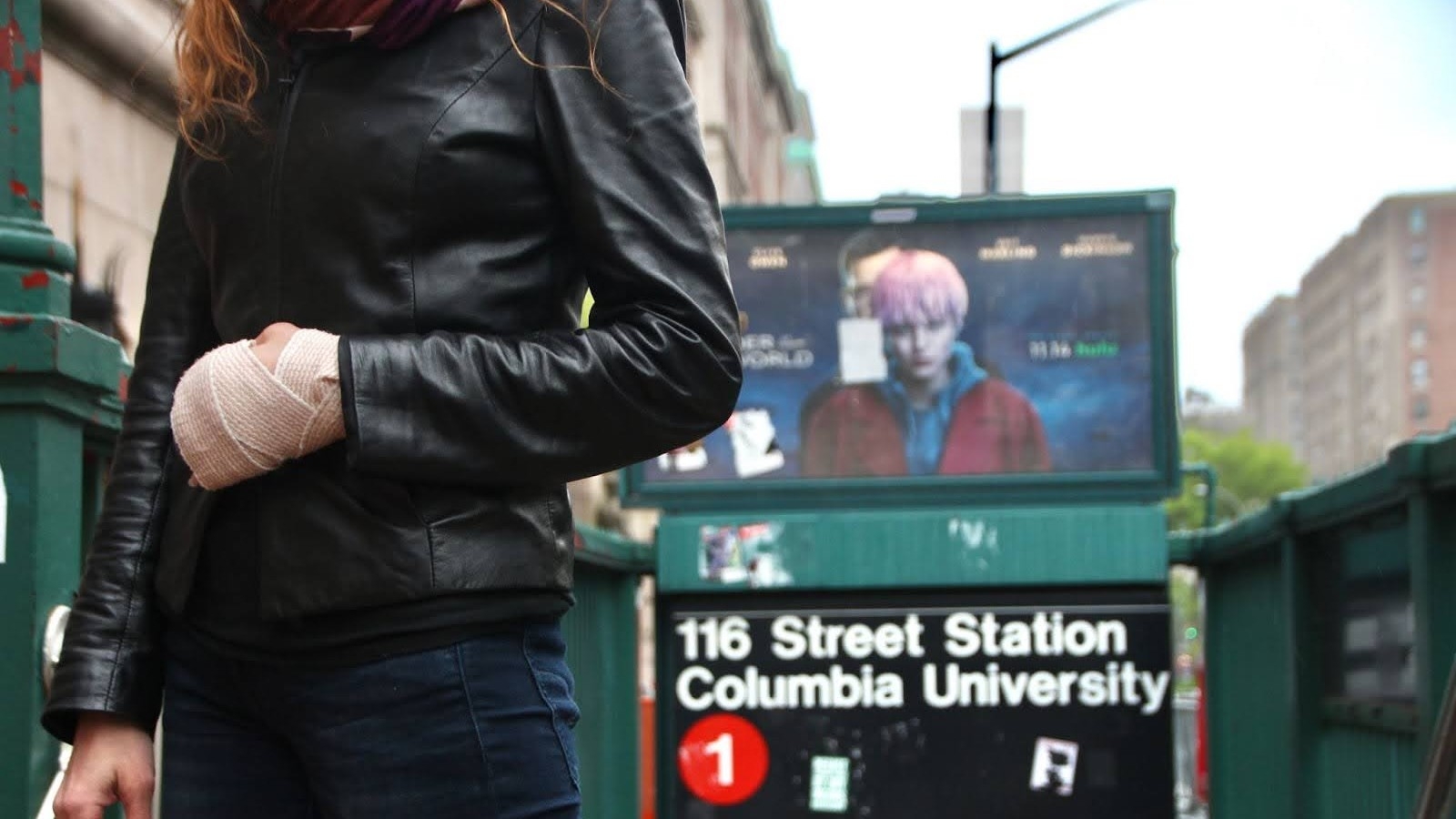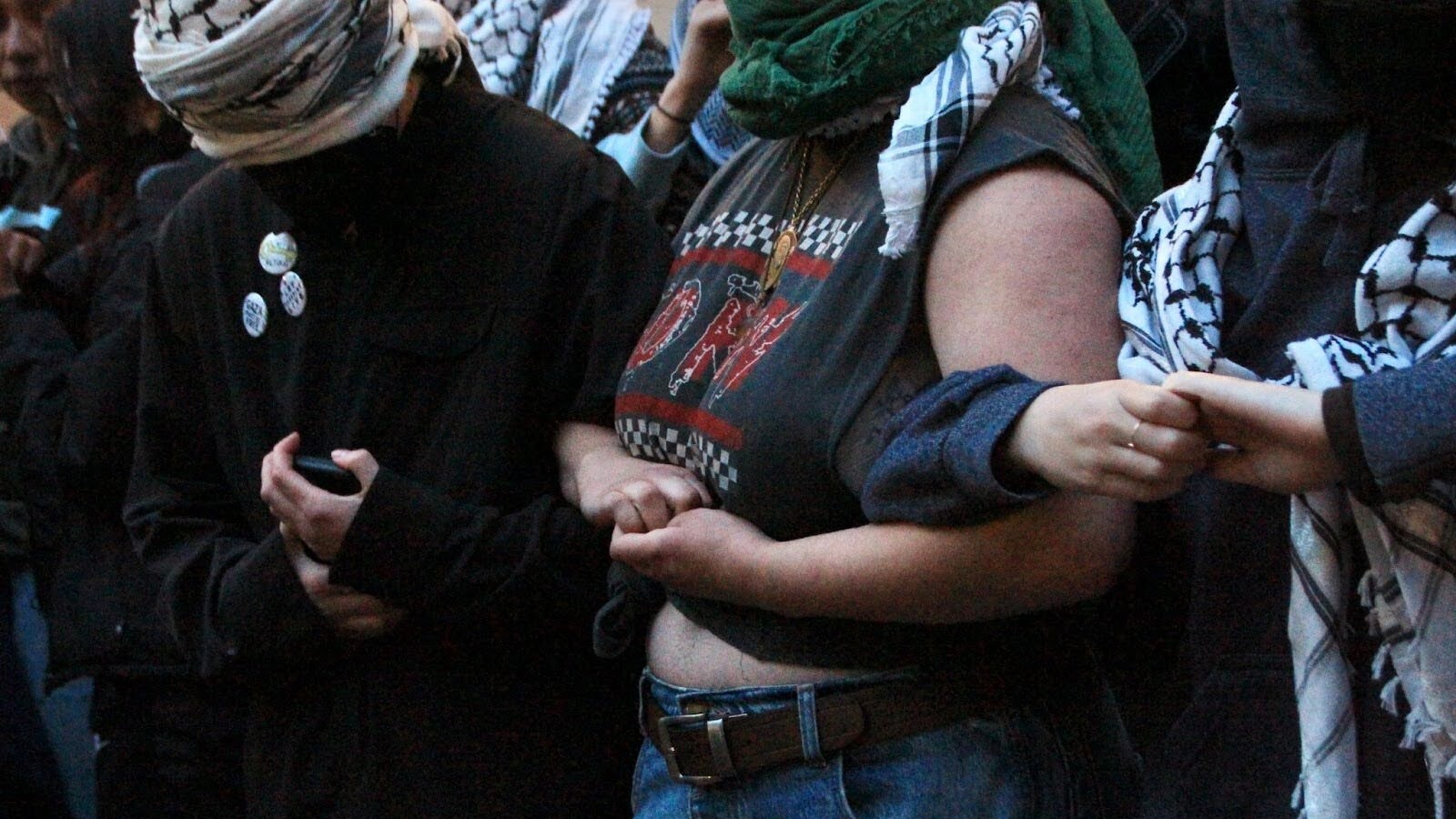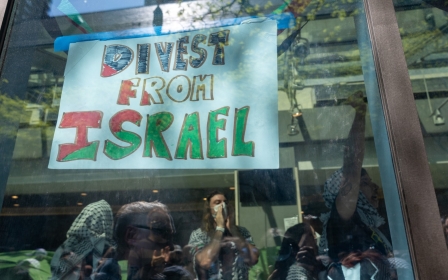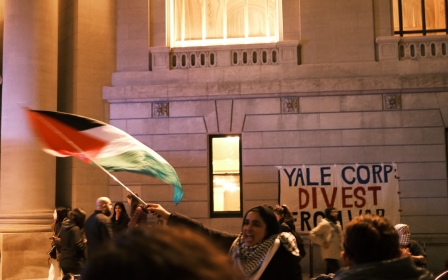War on Gaza: Injured Columbia University student contradicts NYPD’s claims over arrests

Allie Wong was one of 109 students arrested on the night of 30 April, the thirteenth day of pro-Palestine protests at Columbia University in New York City. In the now-viral video of a Columbia student rolling rapidly down the stairs of Hamilton Hall, Wong could be seen running to their side.
“We started screaming, ‘medic!’ But the police were grabbing our bodies,” Wong recalled. “We said, this person needs a medic. They appear to be unconscious. But the police just completely disregarded it and pulled everyone off who had been trying to help.”
'I was just standing…and a cop just pushed me into an area of gravel and bushes'
- Allie Wong
Students had set up an encampment on the lawns outside the university’s Butler Library, refusing to leave until the university disclosed all of its investments - direct and indirect - from Israel. They also demanded that the university divests from companies and institutions there that have been recognised by human rights organisations as being complicit in “a system of apartheid” and Israel’s ongoing bombardment of Gaza.
The arrests took place the night after negotiations failed, and the university threatened protesting students with suspension and expulsion. In response, some students broke into and occupied Hamilton Hall, a building with a long history of being occupied by students during anti-Apartheid and anti-war protests.
Protesters renamed the hall “Hind’s Hall” after Hind Rajab, a six-year-old Palestinian child whose body was found riddled with Israeli bullets twelve days after she had made a distress call to the Palestinian Red Crescent Society.
New MEE newsletter: Jerusalem Dispatch
Sign up to get the latest insights and analysis on Israel-Palestine, alongside Turkey Unpacked and other MEE newsletters
On the evening of 30 April, Columbia President Nemat Minouche Shafik made a written request to the NYPD to enter the university’s urban campus to disband the protest.
Wong had arrived on campus that Tuesday evening around 7:00pm local time, just a couple of hours before the police entered the campus when rumours of imminent arrests were floating around. She had shown up to support her fellow students and put her own body on the line.
She believed that her status as a PhD student at the journalism school, in addition to her status as an American citizen, gave her far more protection than the other students, most of whom were undergraduates, many of whom were teenagers, and some of whom were foreign nationals.
“I was more…anxious about how it was going to go down. Because I was not naive to the fact that there would likely be violence – this is the NYPD we're talking about.”
Wong’s testimony on the events of 30 April is one of many that have begun to emerge and contradict official accounts of the arrests at Columbia and university campuses across New York City, including the City University of New York, New York University and the New School, as reports of police overreach and brutality continue to pile up. At City College, at least 170 students were arrested, many of whom were charged with felonies.
Earlier in May, several volunteer medics at the protests told MEE that the NYPD had prevented them from aiding students during the raids in the city. They were also threatened with arrest for non-compliance.
Since student protests in colleges began over alleged university complicity in the ongoing Israeli war on Gaza, around 2,200 students have been arrested across the country, with several instances of police brutality reported.
'Minimise media coverage'
At 9:15pm local time, the NYPD began marching into campus. There were hundreds of them. The minutes following were all a blur for Wong because of how quickly everything happened.
Despite having “less to risk” than others, Wong remembers being subjected to a disproportionate level of brutality and says she was thrown to the ground at least twice.
“The second time I was thrown to the ground was definitely after that person rolled down the stairs. I was not even engaging in any kind of conflict. I was just standing…and a cop just pushed me into an area of gravel and bushes.”
In a 1 May press conference, NYPD deputy commissioner Tarik Sheppard claimed that their “precision policing ensured that the operation was organized, calm and that there were no injuries or violent clashes.”
But the district attorney has said the police mistakenly discharged a gun inside Hamilton Hall that night, while some students have reported they were not read their Miranda rights, which is customary when making arrests or taking a citizen into custody. A number of students have claimed they were injured in the raid.
The Manhattan district attorney did not respond to Middle East Eye’s request for comment by the time of publishing.
Wong, for one, has an injured hand, sore ribs, a bruised face, and a welt on her head. Her ring and middle fingers had been taped together by a doctor, who recommended she keep her hand and wrist wrapped for the next three weeks. A week after the arrests, she was still awaiting the results of an X-ray and a CT scan, which would determine whether she had sustained injuries to her ribs and skull.
But despite Wong being prepared for what she called a “beat down” – there was a moment when she remembers feeling disarmed. That was when the police began clearing out bystanders from outside Hamilton Hall despite campus access to media that day having already been restricted only to undergraduate student reporters, students of Columbia Journalism School, and a handful of pre-approved members of the press.
“As soon as that happened, I was like, oh, this is probably going to be pretty bad because it looks like they're trying to minimise media coverage.”
The office of the President of Columbia University did not respond to MEE’s request for comment by the time of publication.
No warning
Columbia Journalism School student Natasha Bracken was filled with a sense of dread when she realised she was being pushed away from Hamilton Hall.
“It was obvious that we had to document these protests. The prospect of that right being stripped away from us was both frustrating and worrying,” Bracken said. “Who would be there to show the rest of the world what was about to unfold on campus and in Hamilton Hall?”
Right after the media was cleared out, Wong recalls, the police came down on the students with a free hand.
“There was no warning. They didn't read us our rights. There was no opportunity to choose not to be arrested or not to be attacked. They just came at us and just started picking us apart, and throwing us around and beating us.”
Wong remembers locking eyes with another student who was thrown to the concrete, and "didn’t get up for a while". The police ended up carrying that student – who Wong believes was seriously hurt – away.
Just over a week after the arrests, Wong says the students are "absolutely terrified since the NYPD doxxed us". She believes the police were the source for the website, The Jewish Voice, which published all of the names and addresses of the arrested students. According to Wong, more students haven't come forward because the group is too scared to share any information or to expose themselves, even off the record.
The NYPD did not respond to a request for comment on whether they were the ones to release the information to the media.
Wong wants the focus of the media to be shifted back to what the protestors were fighting for.
“At the end of the day, this movement is about ending the genocide in Palestine and doing that through divesting from Israel. There's precedent for it…it's not like what's being asked is crazy,” she said.
“That's what I would like to see. Like, stop having this conversation about outside agitators and ‘is this antisemitic or not?’ Let's go back to the conversation that this was originally about."
Middle East Eye delivers independent and unrivalled coverage and analysis of the Middle East, North Africa and beyond. To learn more about republishing this content and the associated fees, please fill out this form. More about MEE can be found here.





